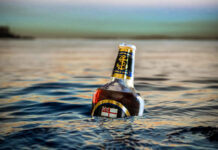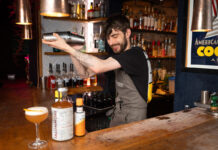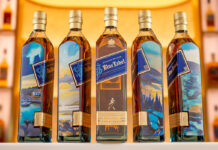Knowledgeable staff can make Scotch more accessible to the masses
FROM malts to blends and Highlands to islands, there’s a lot to consider when it comes to whisky.
And bar staff are very much on the front line, helping pub-goers pick the Scotch that’s right for them.
Training for those working in the on-trade is, therefore, vital, according to whisky firms, who said knowledgeable staff can have a significant impact on whisky sales.
 Phil Keene, on-trade sales director at Whyte & Mackay, acknowledged that the spirit can be “quite a challenging subject” for a number of reasons.
Phil Keene, on-trade sales director at Whyte & Mackay, acknowledged that the spirit can be “quite a challenging subject” for a number of reasons.
“Choice can be one of these, as whilst it is great to have choice and a variety of interesting whiskies on the bar, it can make it more daunting for newbies as they don’t know where to start,” he said.
In this instance, Keene said knowledgeable staff can play a key role, helping to “guide new consumers through the category”. And he encouraged operators to work with their whisky supplier when it comes to staff training.
“All of our brand reps are personally trained by our master distiller Richard Paterson, so if publicans need any advice on training then please just ask them as they will be only too happy to help give further advice,” said Keene.
Sarah McNaught, brand manager for Balblair whisky, underlined the importance of staff training, saying knowledge should be at the heart of introducing a new drink to a customer.
“Bartenders are gatekeepers to brands,” said McNaught.
“Ensuring they are informed and enthusiastic is key to attracting new and young consumers to the category.”
Food matching can broaden appeal
One way in which publicans can ease new whisky drinkers into the category is through food matching, suggested McNaught.

“Introducing first time whisky drinkers through food and Scotch whisky pairings is a great way to introduce Balblair whiskies to new consumers and gives the traditional drink a contemporary feel,” she said.
It seems food and whisky pairings could be particularly fertile ground for publicans in 2015, which is being promoted as the Year of Food and Drink.
Euan Mitchell, managing director at the Isle of Arran distillery, expects 2015 to be a “big year for Scottish food and drink” in which consumer interest in heritage and provenance is expected to grow.
Mitchell suggested operators list Scotch whisky matches on their food menus or recommend an after meal dram to encourage sales.
“Themed menus are [also] a fun way to get involved in the festivities – a night dedicated to Scottish tapas made with local produce offers an alternative take on traditional cuisine and draws in consumers,” said Mitchell.
Whisky doesn’t just mix well with Scottish culinary favourites, it also blends with other drinks providing another point of access for the first time consumer.
Neil Boyd, commercial director of malts at Ian Macleod Distillers, suggested whisky cocktails are a way to demystify the category.
“Introducing whisky cocktails focusing on only the key flavours of malt whiskies is an effective way to introduce new customers to the whisky category,” said Boyd.
“We recently trialled our Tamdhu Speyside single malt in some classic cocktails – The Manhattan and a Whisky Sour.
“These classic serves worked well, especially for a brand which was born out of the Victorian era.”
The use of whisky in cocktails and long mixed drinks was also flagged up by Bell’s and Johnnie Walker owner Diageo, which said there was “increased growth” in these serves.
A spokesman suggested that “licensees should always give whisky brands prominent space on the back-bar” and advised stocking a variety of premium and non-premium whiskies “ensuring consumers can easily see what is on offer and be given the opportunity to trade-up”.



















